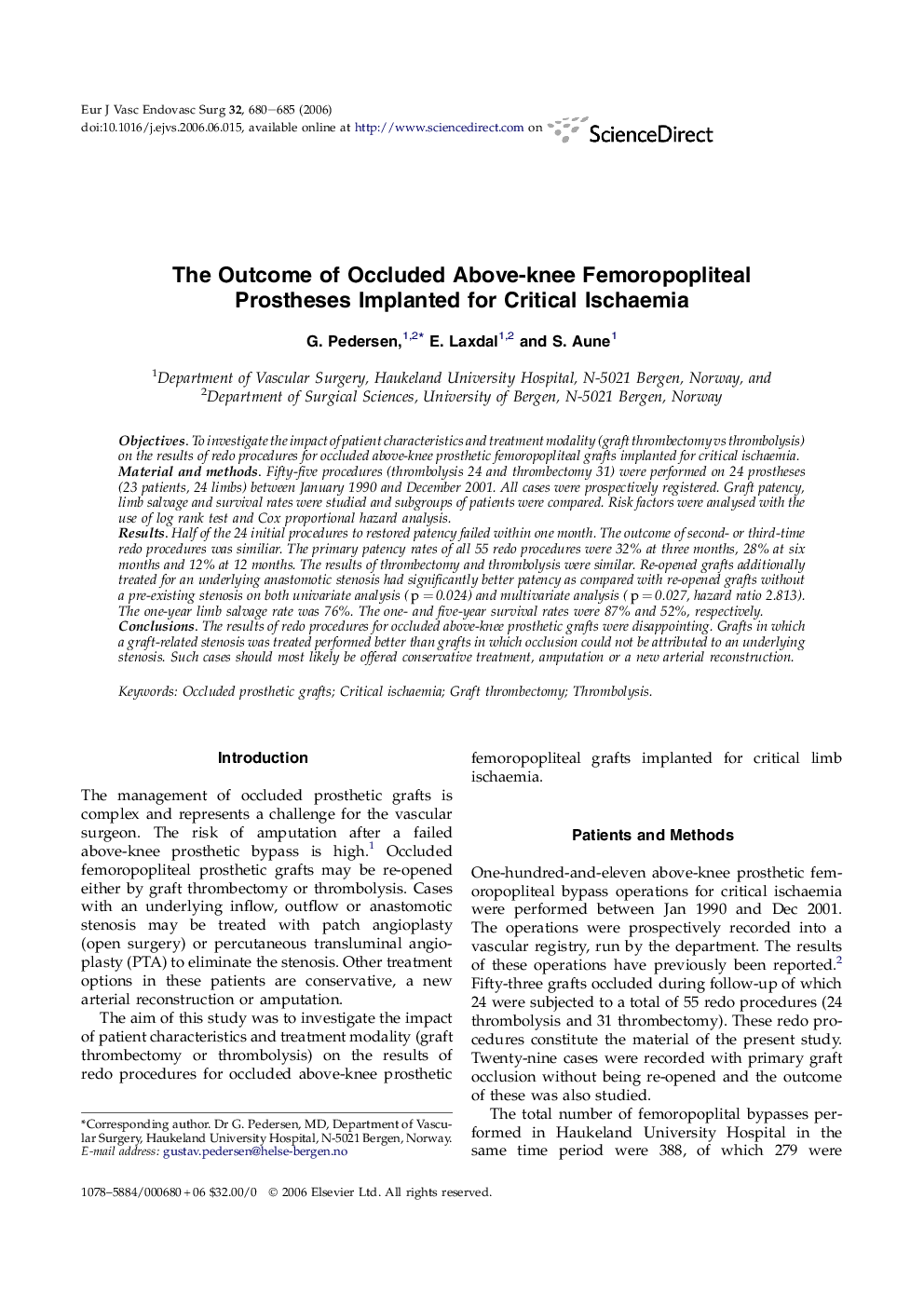| Article ID | Journal | Published Year | Pages | File Type |
|---|---|---|---|---|
| 2915377 | European Journal of Vascular and Endovascular Surgery | 2006 | 6 Pages |
ObjectivesTo investigate the impact of patient characteristics and treatment modality (graft thrombectomy vs thrombolysis) on the results of redo procedures for occluded above-knee prosthetic femoropopliteal grafts implanted for critical ischaemia.Material and methodsFifty-five procedures (thrombolysis 24 and thrombectomy 31) were performed on 24 prostheses (23 patients, 24 limbs) between January 1990 and December 2001. All cases were prospectively registered. Graft patency, limb salvage and survival rates were studied and subgroups of patients were compared. Risk factors were analysed with the use of log rank test and Cox proportional hazard analysis.ResultsHalf of the 24 initial procedures to restored patency failed within one month. The outcome of second- or third-time redo procedures was similiar. The primary patency rates of all 55 redo procedures were 32% at three months, 28% at six months and 12% at 12 months. The results of thrombectomy and thrombolysis were similar. Re-opened grafts additionally treated for an underlying anastomotic stenosis had significantly better patency as compared with re-opened grafts without a pre-existing stenosis on both univariate analysis (p = 0.024) and multivariate analysis (p = 0.027, hazard ratio 2.813). The one-year limb salvage rate was 76%. The one- and five-year survival rates were 87% and 52%, respectively.ConclusionsThe results of redo procedures for occluded above-knee prosthetic grafts were disappointing. Grafts in which a graft-related stenosis was treated performed better than grafts in which occlusion could not be attributed to an underlying stenosis. Such cases should most likely be offered conservative treatment, amputation or a new arterial reconstruction.
